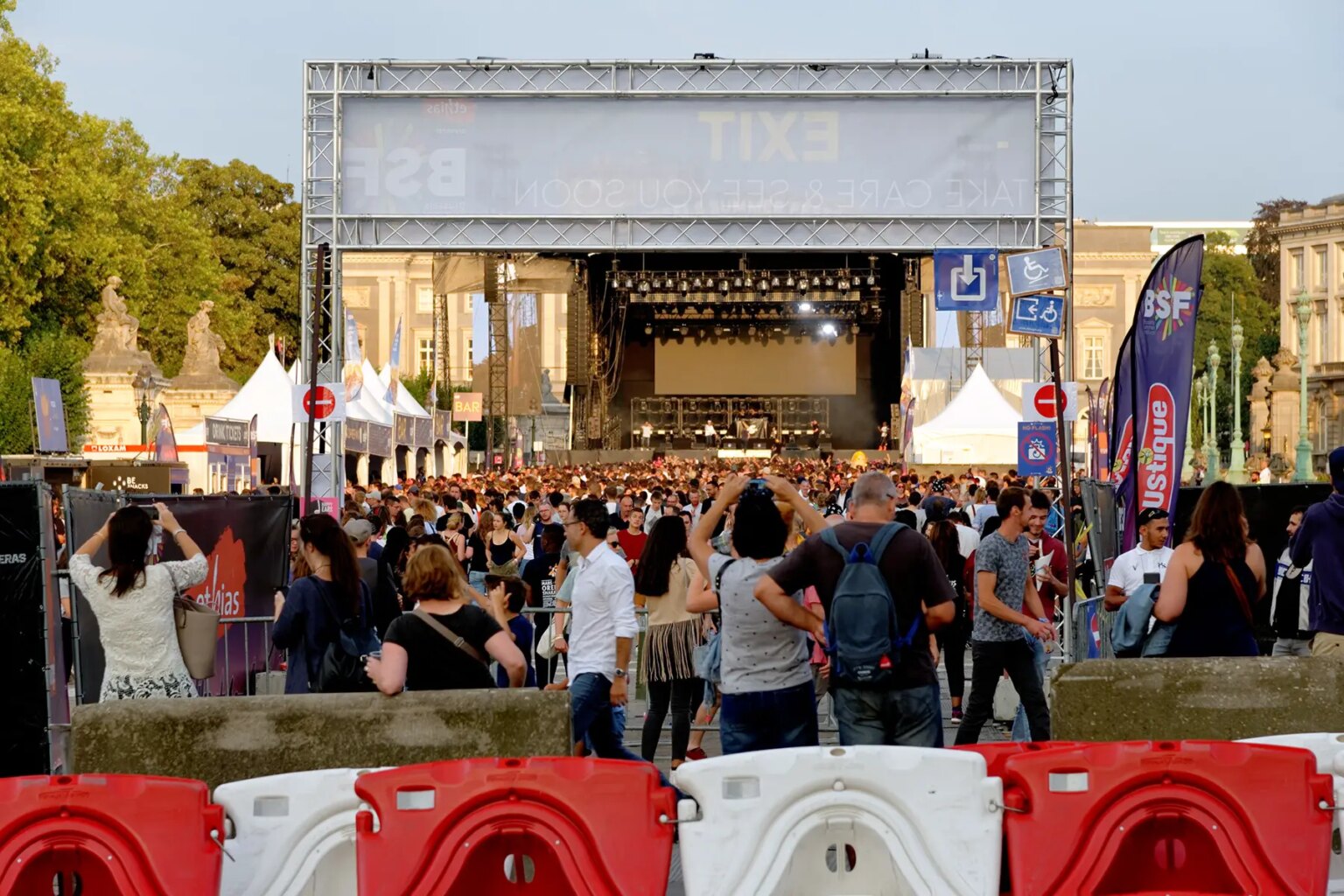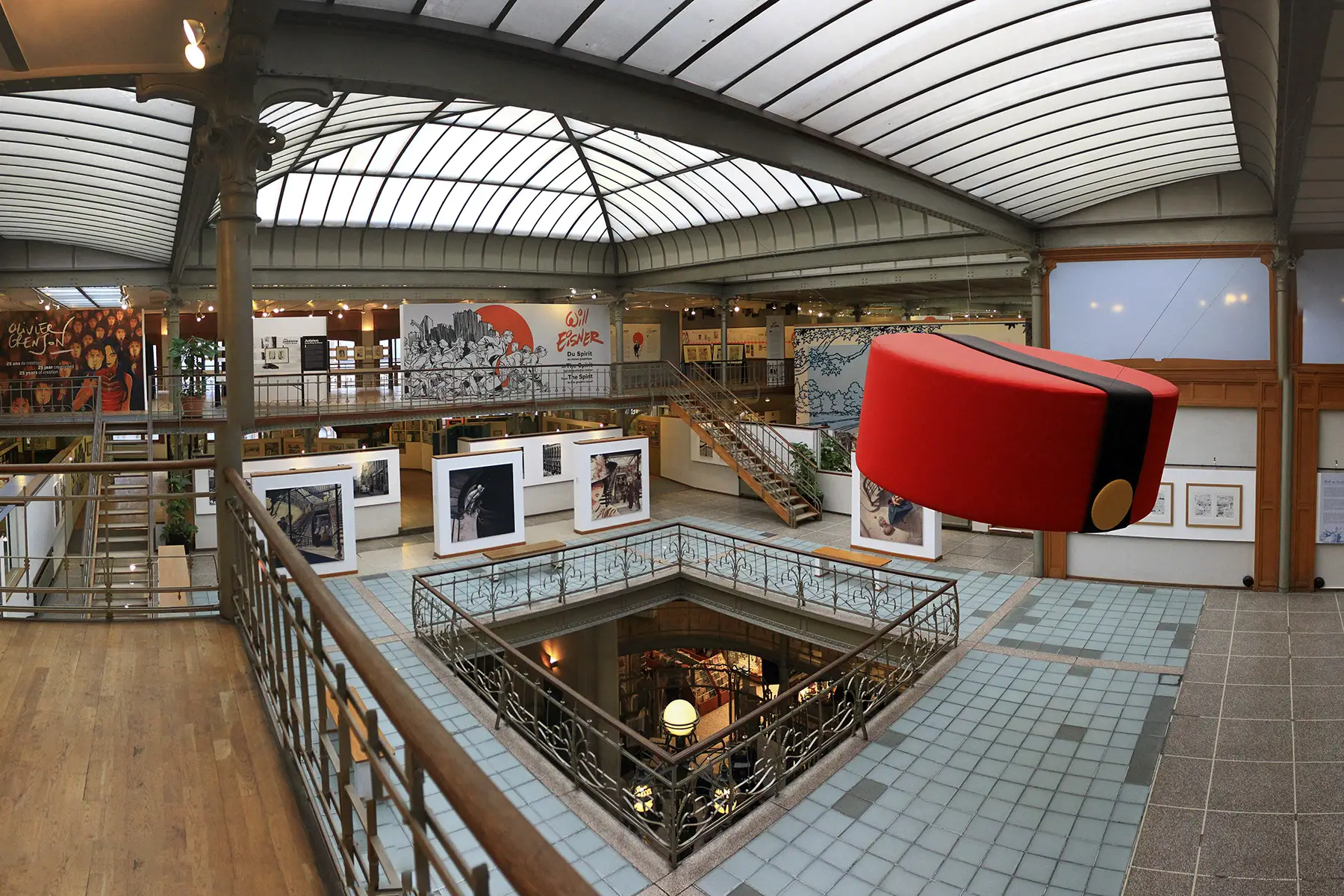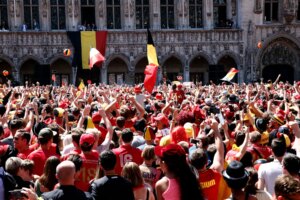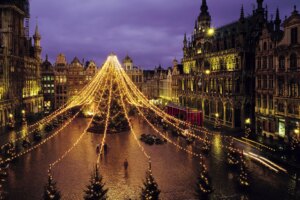Aside from its widely celebrated Belgian national holidays, Belgium hosts a range of exciting festivals throughout the year. While many celebrate milestone events in Belgian history, others bring people together to enjoy a variety of fun – and often bizarre – entertainment. So if you fancy a dose of culture – and some amusements along the way – here are some of the best festivals in Belgium that are well worth checking out.
- Carnival of Binche
- Anima: The Brussels Animation Film Festival
- The Battle of Waterloo Reenactment
- Festival of Wallonia
- Carnival of the Bears, Andenne
- Laetare de Stavelot
- Brussels Flower Carpet
- Zythos Beer Festival, Leuven
- Beselare Witch Parade
- Brussels Summer Festival (BSF)
- Procession of the Holy Blood, Bruges
- Cavalcade of Herve
- Régate Internationale de Baignoirs, Dinant
- The Ommegang Pageant, Brussels
- Brussels Pride
- Tomorrowland, Boom
- Gentse Feesten
- Zinneke Parade, Brussels
- Kattenstoet, Ieper
- Winter Wonders, Brussels
Groupon
Want to explore all the exciting things Belgium has to offer but on a tight budget? Don't worry, Groupon is here to save the day! There are hundreds of incredible deals and discounts to be found on the website, including reduced prices on tickets to popular museums, theater shows, tourist attractions, and more throughout the country. So go ahead and treat yourself!
Carnival of Binche
Each year, the famous three-day Carnaval de Binche sees the town of Binche return to the 16th century. The colorful event takes place during the Sunday, Monday, and Tuesday preceding Ash Wednesday. It takes weeks of preparation and highlights the journey of more than 1,000 Gilles (clown-like characters) on Shrove Tuesday. But the effort is well worth it as the carnival was recognized as an Oral and Intangible Heritage of Humanity by UNESCO in 2003.

During the celebrations, music parades through the town, culminating in the appearance of the Gilles on the Grand Place. The comical figures proceed to dance to the beating of drums and ward off evil spirits with sticks. They then march through the town with baskets of oranges and throw them at spectators. If you are hit by one, it is meant to bring good luck, but if you throw one back, it is seen as an insult. Carnival celebrations such as these take place in various locations around Belgium; so there is always a place to celebrate the lively occasion while you are there.
Anima: The Brussels Animation Film Festival
With screenings of more than 300 different animated movies from around the world, Anima is the place to be for fans of animated films and cartoons. Held every year in February at the Flagey Center in Brussels, the popular event seeks to promote cartoons and animated films; while bringing together artists, filmmakers, and fans of the medium. Visitors can view a vast array of shorts and features, commercials, and music videos. They can also attend exhibitions and workshops held over the nine-day festival. Besides its national and international competitions, the festival nominates a selection of films for the Cartoon d’Or; the award for the best European animated short film.
The Battle of Waterloo Reenactment
Belgium is famous for the historic Battle of Waterloo in June 1815. During the momentous battle, the Duke of Wellington defeated Emperor Napoleon I and his army of 93,000 soldiers. To commemorate this milestone in history, and reenactment of the battle takes place every June in the field of Waterloo where the conflict took place.
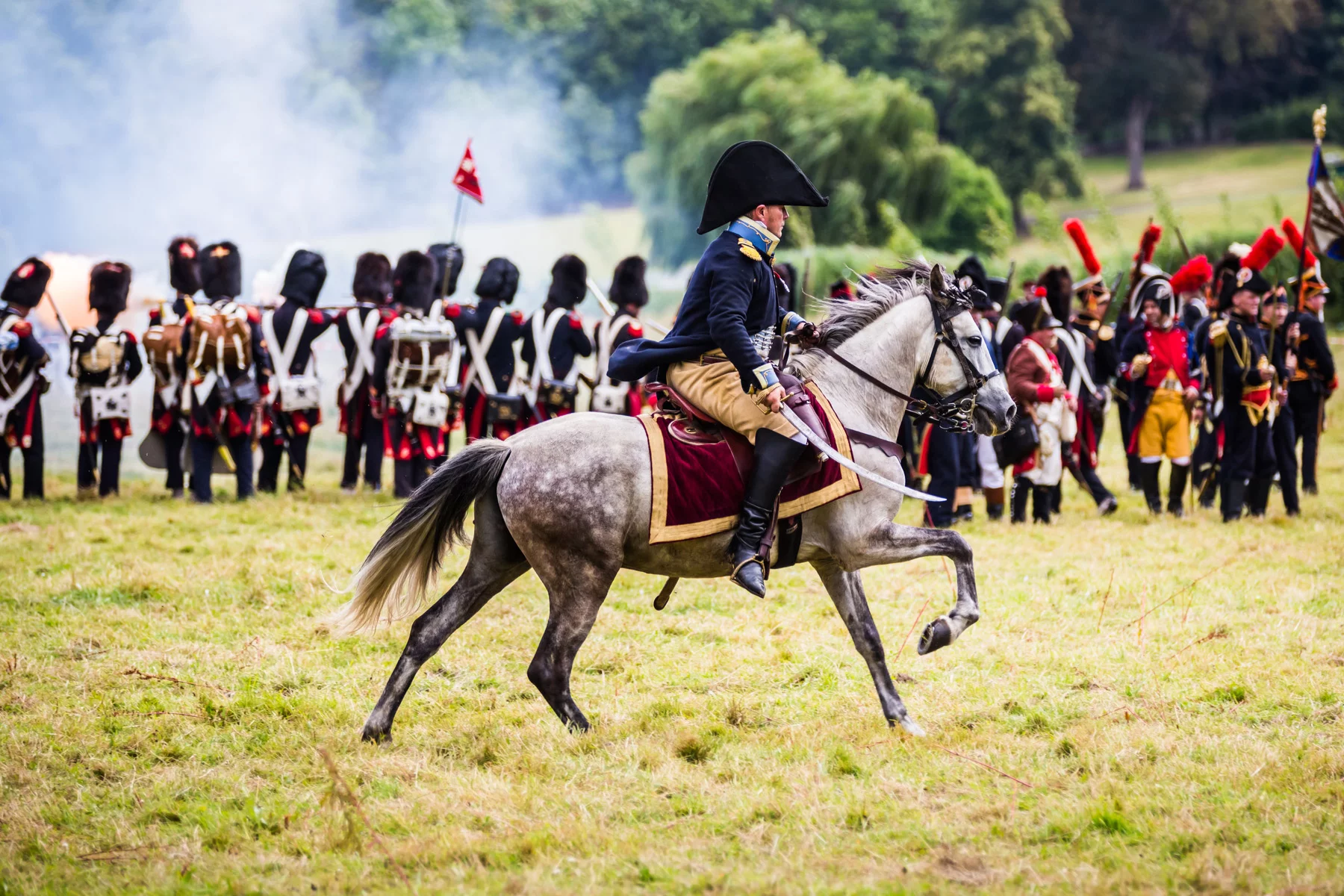
Thousands of re-enactors don period uniforms on the battlefield to honor the victory over the course of a weekend. Visitors from all over the world come to witness the unforgettable reprisal and visit the various historical attractions in the town of Waterloo. These include battlefield tours, Napoleon’s Last Headquarters, and the Wellington Museum.
Festival of Wallonia
Held every third Sunday of September, the Festival of Wallonia (or Fêtes de Wallonie) celebrates Belgian independence, patriotism, and Walloon identity. It also commemorates the famous revolutionary days of September 1830 when the country was officially formed. Although the festival is marked across southern Belgium, the biggest celebrations are held in Wallonia’s capital city, Namur. As many as 250,000 people attend the event each year. Festival highlights include a moving Monday morning mass, traditional dances, and a stilt-walking contest called The Combat de l’Echasse d’or; or the Fight for the Golden Stilt. During this contest, two groups of stilt-wearing contestants must battle it out to the sound of beating drums, attempting to make their opponent fall down using only their elbows or stilts. The last man standing is hailed as the champion.
Carnival of the Bears, Andenne
The origins of this bizarre festival sound like something from the pages of a children’s storybook. But as legend has it, a long time ago, a nine-year-old boy from the Walloon town of Andenne killed a bear that was terrifying his grandmother. The little boy defeated the animal with only a hammer! Thus, the bear became the proud symbol of the town and the mascot for the Andenne Carnaval des Ours. It should come as no surprise, therefore, that the town’s own unique festival is ursine-themed.
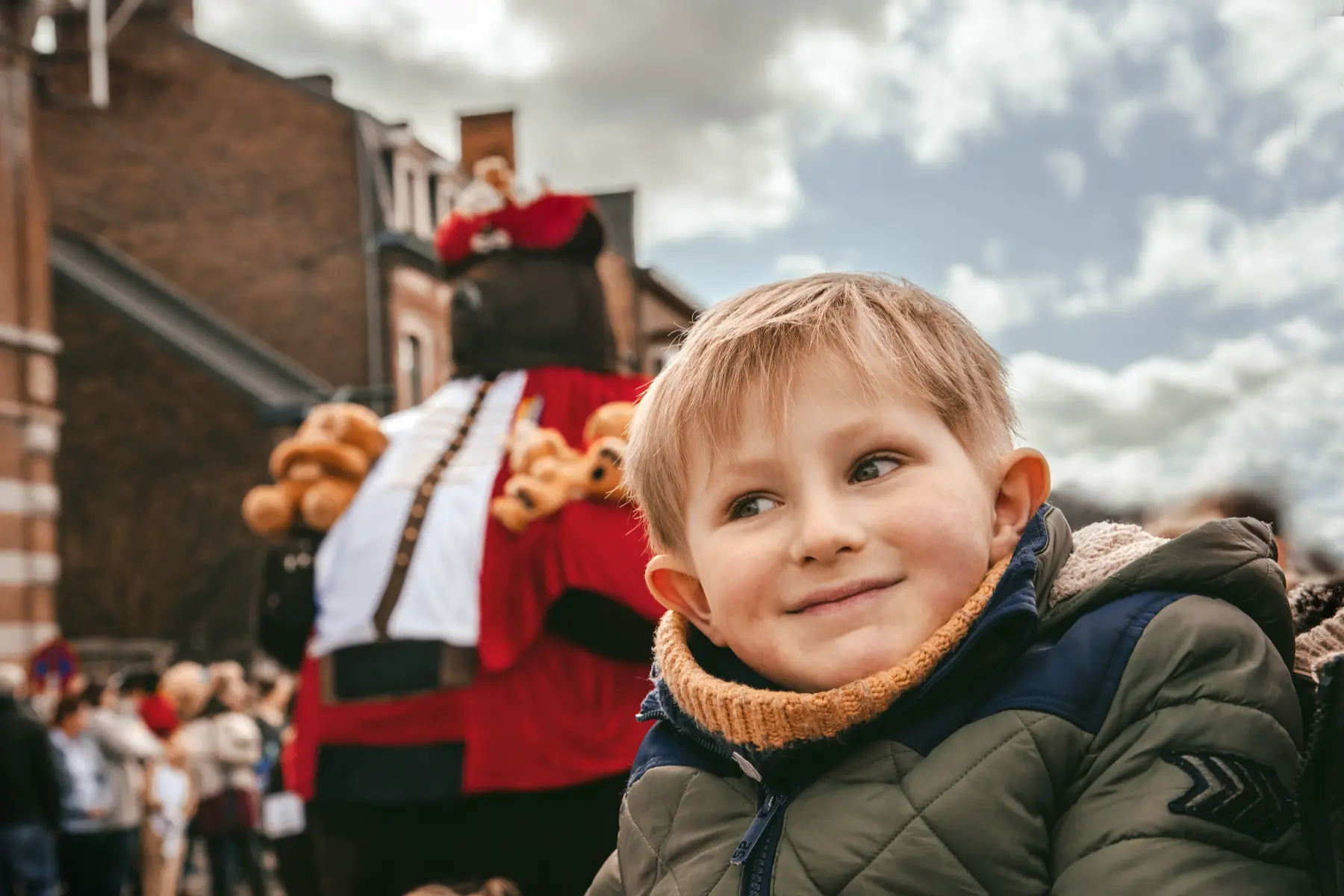
During the celebrations, which take place every March, 30 carnival floats and a parade of dancers in bear costumes make their way through the streets. They tease passersby and imprison girls en route inside a famous ‘maiden’s cage’. At the end of the parade, to the delight of all the children, the King and Queen of the Carnival throw 250 vintage teddy bears into the crowd from the balcony of the Town Hall. Unsurprisingly, the carnival remains a calendar highlight for the people of Andenne; especially the kids!
Laetare de Stavelot
The Laetare of Stavelot is a traditional carnival that occurs on the fourth Sunday of Lent in Stavelot in Liège. The event remains one of the most famous in Wallonia, mainly for its principal attraction: the Blancs Moussis (clad in white). During the parade, these sinister Pinocchio-like characters shower people with confetti and wreak havoc on the city. They stuff confetti down women’s tops, beat bystanders with inflated pig bladders, and plaster posters on houses and shop windows; sometimes making fun of the local inhabitants. The quirky festival traces all the way back to 1502 when local monks were controversially forbidden from joining the celebrations by their Prince-Abbot. In response, the townsfolk dressed up in monkish robes, complete with masks and fake noses to disguise themselves, and partied twice as hard. Today, more than 2,200 volunteers dress up for the occasion, attracting a crowd of around 35,000 spectators each year.
Brussels Flower Carpet
Every two years (on the even years) in mid-August, the Grand Palace in Brussels comes alive with the color of more than half a million begonias. Measuring 70m long and 24m wide, the intricate Flower Carpet has been a showstopper since it first appeared in 1971. Amazingly, a hundred volunteers set it up in just eight hours.
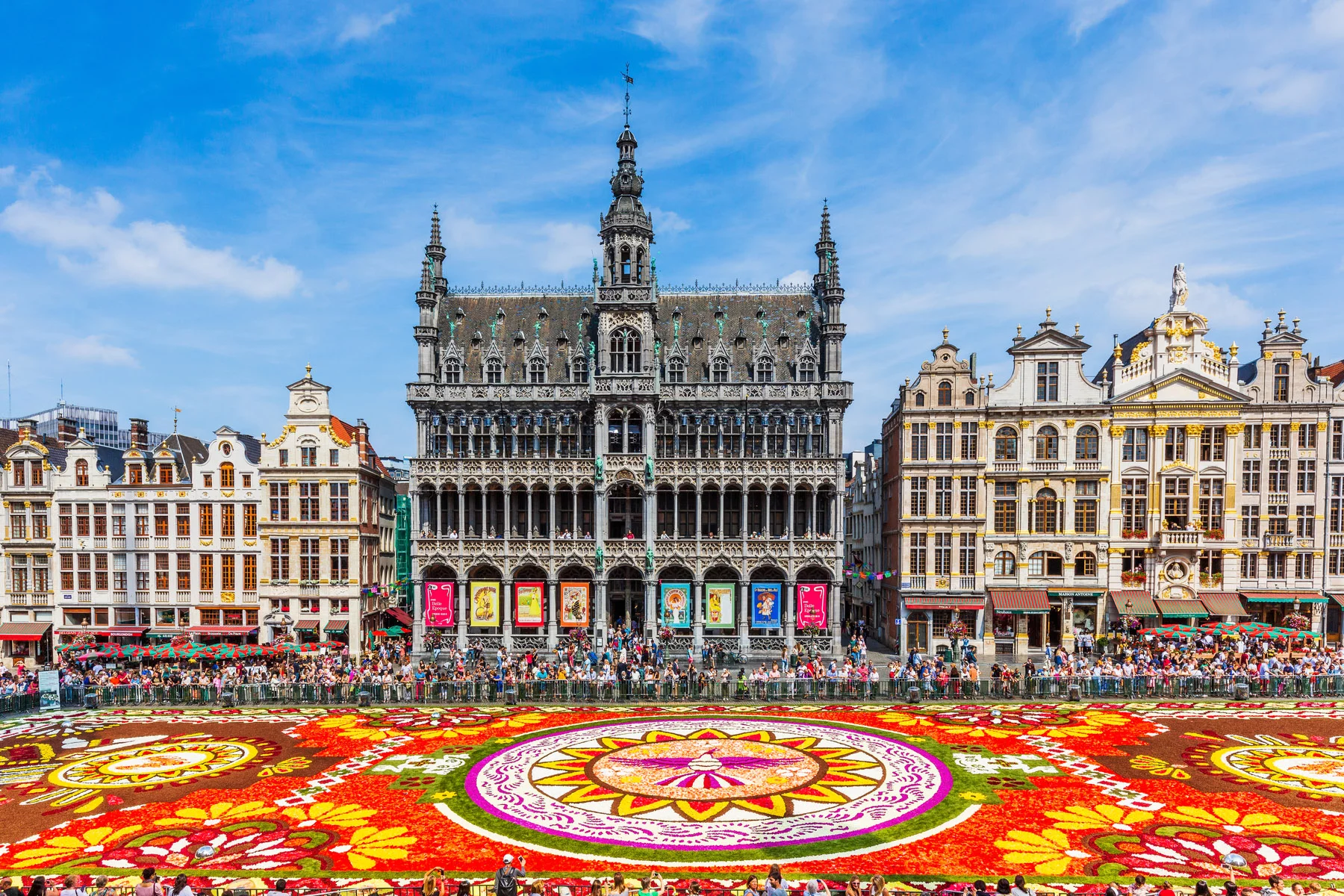
Visitors from all over the world come to stroll around the Grand-Place and admire the breathtaking display; all the while inhaling the fragrant scent of the begonias. They are also able to enjoy a wide-angle view of the extraordinary spectacle from the balcony of the Town Hall. A special musical theme is also composed for each edition, adding even more atmosphere to the event. There is also a concert each evening which accompanies a magnificent sound and light show.
Zythos Beer Festival, Leuven
The Zythos Beer Festival in Leuven is the largest beer festival in the world devoted exclusively to Belgian barley beer. The event showcases more than 600 different types of beer from 100 brewers in just one weekend; all housed within the impressive Brabanthal event hall. Admission is free and visitors can taste one of the many Belgian beers on offer at the stalls in exchange for one or two tokens; they have to buy a starter package. Interestingly, Leuven is also home to Stella Artois and the longest bar in the world, on the Oude Markt. Therefore, make sure you pull up a chair and enjoy a pint while you’re there. During the festival, many restaurants around the city serve special dishes cooked with Belgian beer. They also offer various beer walks and workshops for those who appreciate a good brew.
Beselare Witch Parade
Beselare has been known for centuries as a sorceress’s parish. In fact, a number of stories and legends of witchcraft were written by folk writers in the 17th century. In 1959, these stories culminated in a village festival, which grew into a witch’s parade, Heksenstoet, in 1963. More than 1,000 characters dressed in costume parade through the streets of Beselare every two years (uneven years) on the last Sunday of July.

These include figures from well-known fairy tales; as well as local legendary characters such as Sefa Bubbels and Meele Crotte. A few weeks before the parade, comical scenes featuring witch dolls appear in the streets. During the parade itself, music and dancing go on all night, culminating in a nail-biting recreation of the chilling witch trials.
Brussels Summer Festival (BSF)
Every August, Brussels turns into a big party town thanks to the Brussels Summer Festival (BSF). First held in 2002, the huge 10-day event has become one of the most highly-anticipated celebrations on the city’s calendar. More than a hundred concerts take place on the stages between the Royal Palace, the Mont des Arts, the Madeleine, and the Place du musée. International artists such as Iggy Pop, Level 42, The Dandy Warhols, and Madness have previously performed to tens of thousands of spectators here. Numerous theater performances and street entertainers provide even more entertainment throughout the city during the festival.
Procession of the Holy Blood, Bruges
More than 100,000 people come to witness the Procession of the Holy Blood in Bruges each year on Ascension Day. The religious Catholic event has taken place every year since the 13th century; when the relic, which is believed to contain Jesus Christ’s blood, is said to have arrived in Bruges. Over 3,000 participants march in the procession in various costumes and roles; carrying the relic so that it might once again become liquid.

Among them are a large number of church officials including the 30-strong Brotherhood of the Holy Blood; who look after the relic. Floats, bands, and choirs also join, but when the blood passes the crowd, they fall silent. In 2009, the procession received UNESCO-protected status.
Cavalcade of Herve
More than 50,000 people line the streets of Herve, near Liège, each year to witness the impressive Calvalcade de Herve. Dozens of colorful horse-drawn carriages are pulled along the streets and various entertainment takes place; including shows for children, serenades, horse fairs, and a local market. The cavalcade has been occurring in Herve every Easter Monday since 1876 and has become a cherished tradition among locals in the ancient town. A spectacular firework display, live music, and plenty of dancing make it a fun day out for all the family. In recent years, the celebrations have even continued across the whole Easter weekend.
Régate Internationale de Baignoirs, Dinant
Come August, a fleet of floating bathtubs with unusual decorations can be seen floating down the River Meuse in the tiny town of Dinant. Around 25,000 people gather on the riverbanks to enjoy the outrageous Régate Internationale de Baignoirs (International Bathtub Regatta) over six days.
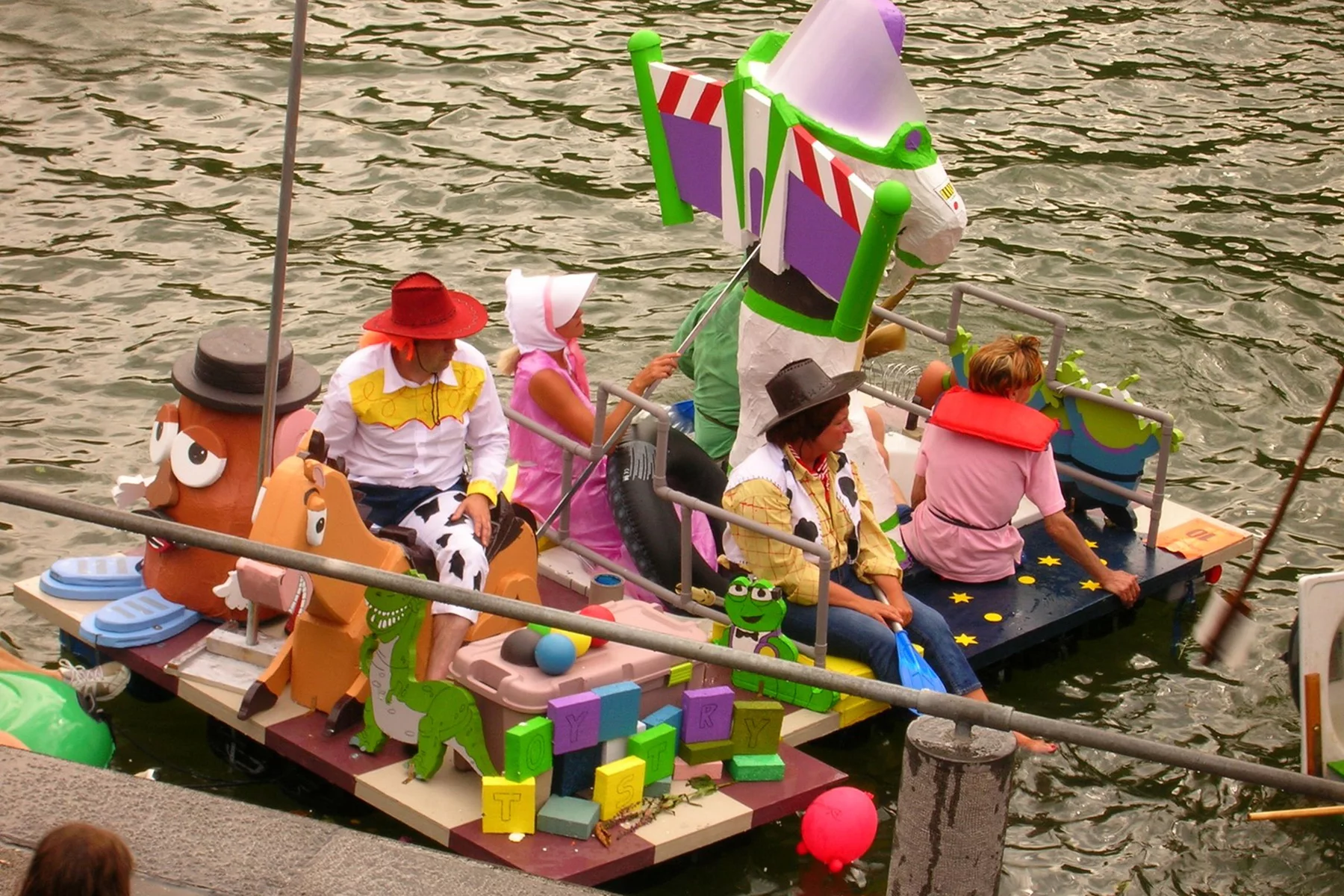
Surprisingly, even world-class athletes take part in the remarkable regatta, sailing down the 1km stretch of water in their own creative vessels. The rules are simple: all entrants must be able to launch a seaworthy (or river-worthy) craft that includes at least one bathtub. The winner is rewarded with over €10,000, which helps to keep the competition fierce.
The Ommegang Pageant, Brussels
The annual Ommegang Pageant dates all the way back to 1549 when it was first held for Charles V and his honored guests. Today, some 1,400 participants dressed in historical costumes re-enact the first official royal visit. Tiered stands are set up in and around the Grand Place so that guests can witness jousting and flag processions. Meanwhile, a traditional Renaissance village in Park Royal invites them to discover how the artisans of the era practiced their craft; including barbers, surgeons, blacksmiths, and iron forgers.
Brussels Pride
The Belgian arm of the now worldwide Pride Festival, Brussels Pride, takes place every May. The most colorful free festival of the year not only serves as a political statement for the LGBTI+ community in Brussels but is also one of the biggest parties of the year.
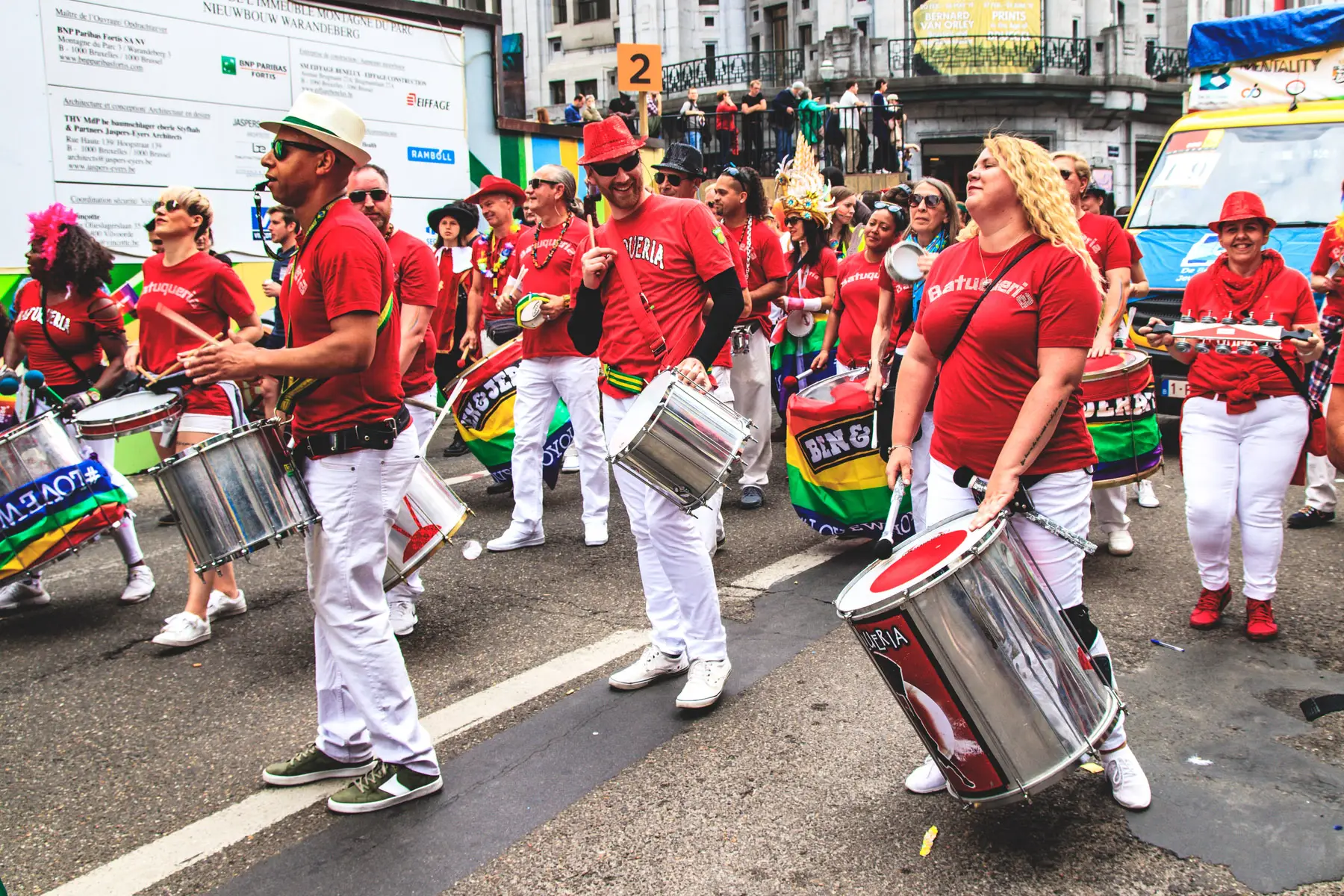
Musical and artistic performances, street parties, and various other forms of entertainment make up the festival program. Activists and campaigners also deliver inspiring speeches to the tens of thousands of people who attend the event. The highlight of the festival is the exuberant and colorful Pride Parade, which sees thousands of people make their way through the streets of Brussels dressed in all the colors under the sun.
Tomorrowland, Boom
Ironically, the largest and most outrageous electronic music festival in the world is held in the tiny Belgian town of Boom. David Guetta, Martin Garrix, and The Chainsmokers have previously graced the stage at Tomorrowland. The event attracts nearly half a million people over the course of two weekends in summer. Unsurprisingly, tickets sell out fast – sometimes within an hour. Therefore, you need to act quickly if you want to catch some of the hottest DJs and music acts in the world.
Gentse Feesten
Every summer, more than a million visitors attend the largest open-air cultural folk festival in Europe; the Gentse Feesten (Ghent Festival). The 10-day event boasts an impressive lineup of national and international artists who perform in more than ten squares around the city.
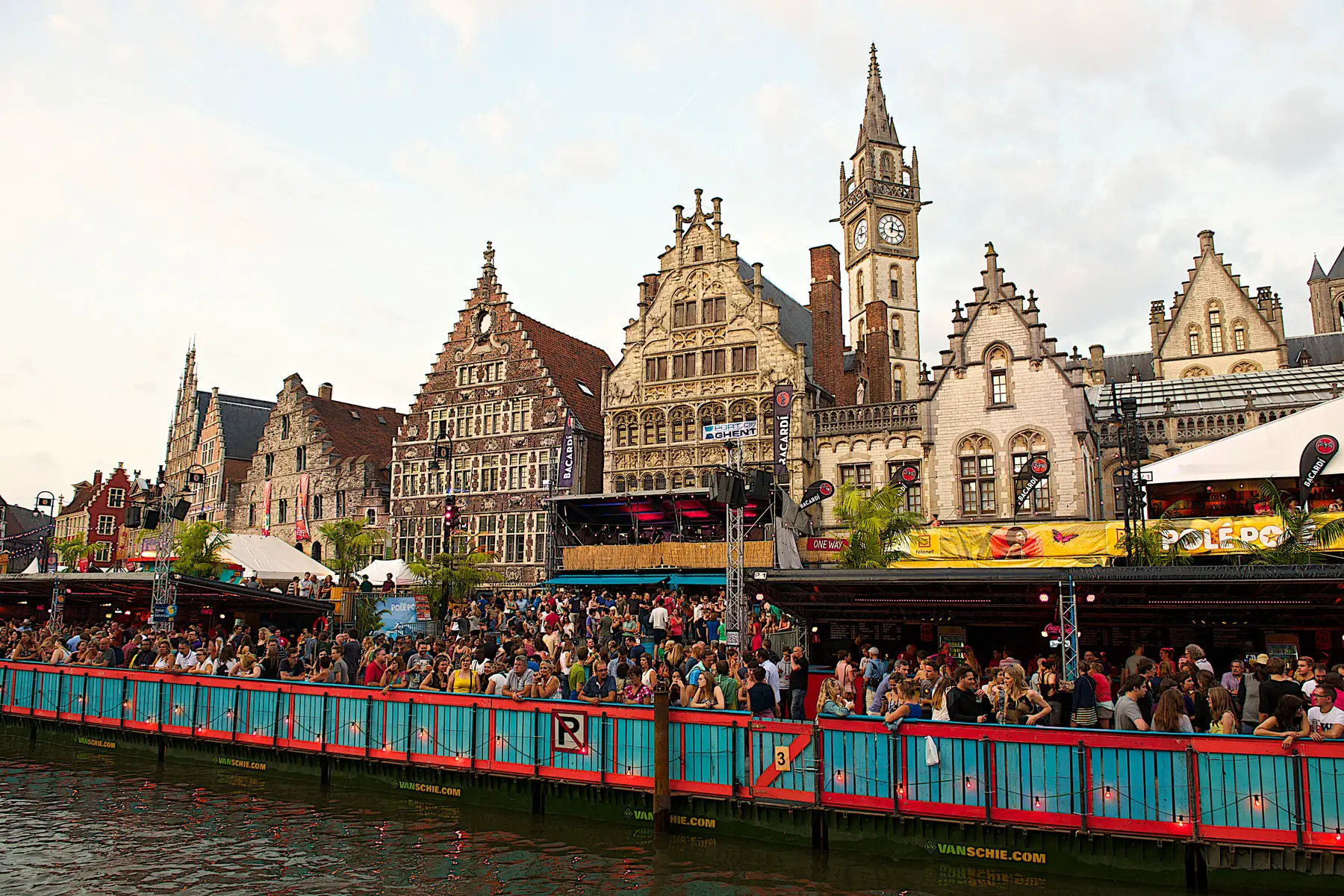
During this time, numerous children’s entertainment and hundreds of indoor and outdoor activities also take place in various locations around the city. The official opening of the festival occurs on the Friday before the third Sunday of July. And because the festival is free to attend, it continues to attract a large and diverse crowd each year.
Zinneke Parade, Brussels
The Zinneke Parade is a biennial festival that takes place in Brussels every other year (on the even years) in May. Zinneke is the nickname for the Zinneke Association which organizes the event and decides a different theme each time. During the festival, music is performed live without amplification, and no motorized vehicles are allowed in the area. The heartwarming event is often described as being “100% human” and aims to connect cultures, communities, and districts within Brussels. Around 1,500 participants come together to parade through the streets of the city; all dressed as the theme of that particular year.
Kattenstoet, Ieper
If you’re an avid cat lover, then you will be in paradise at Kattenstoet (Festival of the Cats) in Ieper. Or perhaps not when you learn of its origins. The city’s association with felines is believed to stem from a gruesome tale of cat-throwing from the bell tower back in the 18th and 19th centuries. One theory is that cats were connected to witchcraft; the throwing of the animals, therefore, symbolized the killing of evil spirits. Another story suggests that it was an attempt to control the city’s growing cat population; after they were brought into the Cloth Hall (Lakenhallen) to kill vermin.

Either way, the quirky festival, which is now held on the second Sunday of May every three years, is famous for its Cat Parade. Various colorful floats, bands, and dance groups entertain the crowds; many of whom come dressed as cats, witches, mice, and old townspeople. To every child’s delight, the festival ends with a fool throwing toy cats from the belfry.
Winter Wonders, Brussels
Come the festive season, Christmas markets pop up all over Belgium; bringing tiny wooden huts that sell all manner of delicious goodies and gifts. The most popular of these, however, is the Christmas market in Brussels, which goes by the name of Winter Wonders. Over 2km of stalls, attractions, and activities await visitors in the heart of the city at the Grand Place and surrounding areas. The market offers plenty of variety too; whether you fancy something traditional, vintage, or gastronomic, you are sure to find it here. The market is open seven days a week throughout the period. But don’t worry if you miss it because there are plenty of other Christmas markets in Belgium.
